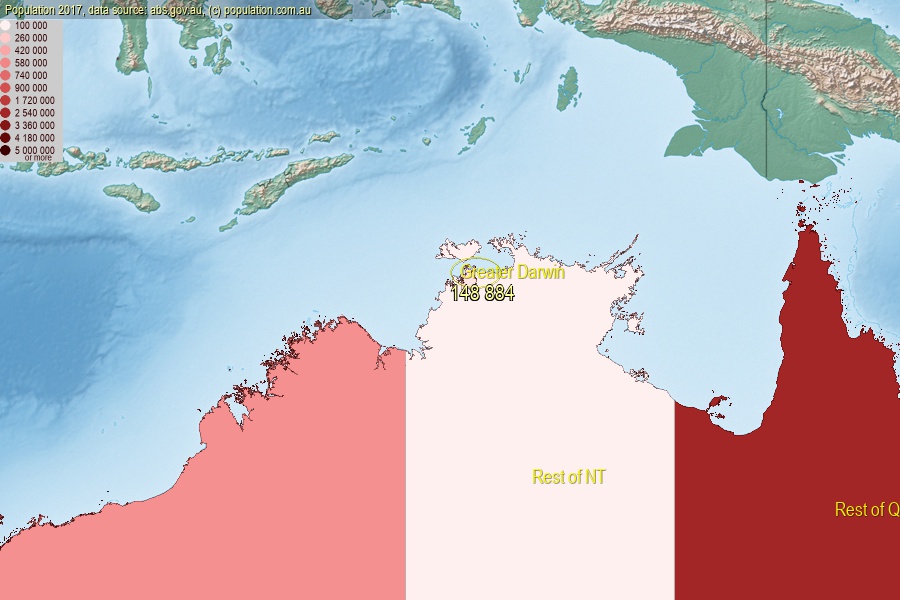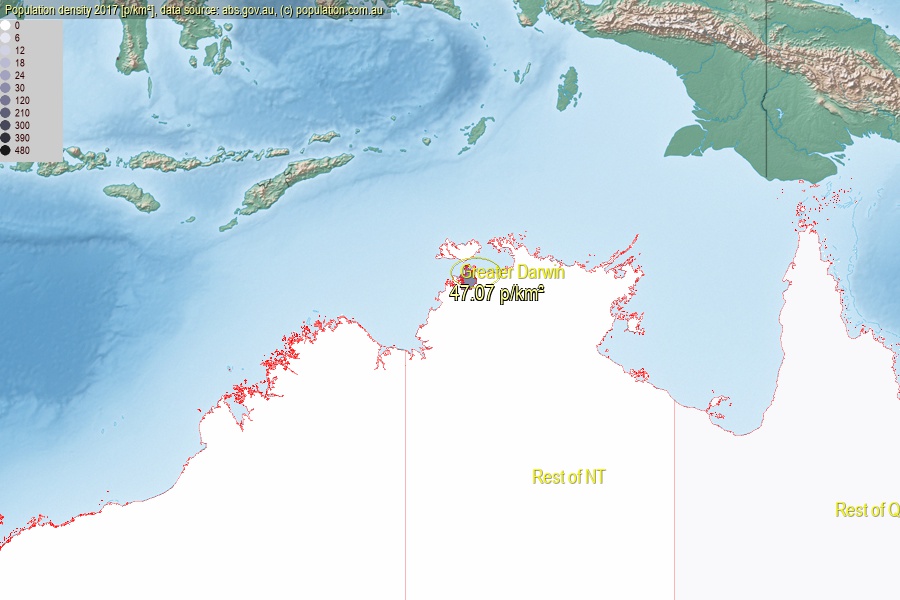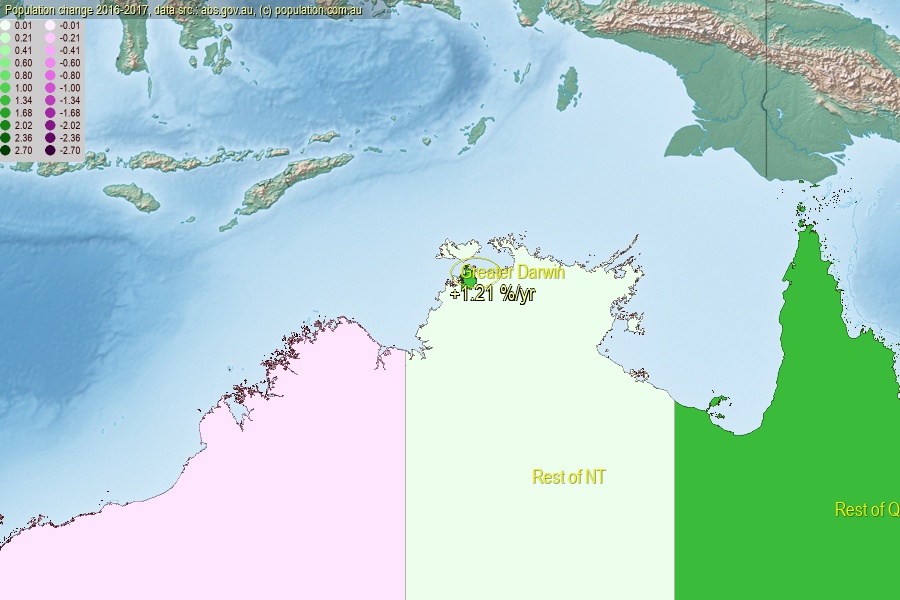 population.com.au
population.com.auLast official estimated population of Greater Darwin (as Greater Capital City Statistical Area) was 148 884 people (on 2017-06-30)[2]. This was 0,6% of total Australian population. Area of Greater Darwin is 3 163,00 km², in this year population density was 47,07 p/km² . If population growth rate would be same as in period 2016-2017 (+1.21%/yr), Greater Darwin population in 2025 would be 163 940. [0]



Click to enlarge.
Population [people], population density [p./km²] and population change [%/year] [2]
[1991-1992] +1,64 %/Y
[1992-1993] +1,98 %/Y
[1993-1994] +2,07 %/Y
[1994-1995] +3,29 %/Y
[1995-1996] +2,98 %/Y
[1996-1997] +3,36 %/Y
[1997-1998] +1,87 %/Y
[1998-1999] +1,90 %/Y
[1999-2000] +1,98 %/Y
[2000-2001] +1,76 %/Y
[2001-2002] +0,37 %/Y
[2002-2003] -0,23 %/Y
[2003-2004] +0,72 %/Y
[2004-2005] +1,99 %/Y
[2005-2006] +1,86 %/Y
[2006-2007] +3,06 %/Y
[2007-2008] +3,66 %/Y
[2008-2009] +3,39 %/Y
[2009-2010] +2,01 %/Y
[2010-2011] +1,00 %/Y
[2011-2012] +3,10 %/Y
[2012-2013] +4,03 %/Y
[2013-2014] +1,95 %/Y
[2014-2015] +2,65 %/Y
[2015-2016] +1,51 %/Y
[2016-2017] +1,21 %/Y
[0] Calculated with linear interpolation from officially estimated population
[1] Read more about GCCSA on abs.gov.au
[2] Population data from Australian Bureau of Statistics / ABS.Stat (Population and density: 2017; change: 2016-2017)
[3] Digital Boundaries: Australian Statistical Geography Standard (ASGS) 2016.